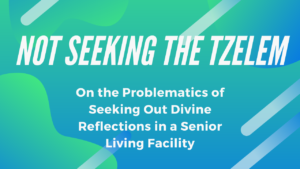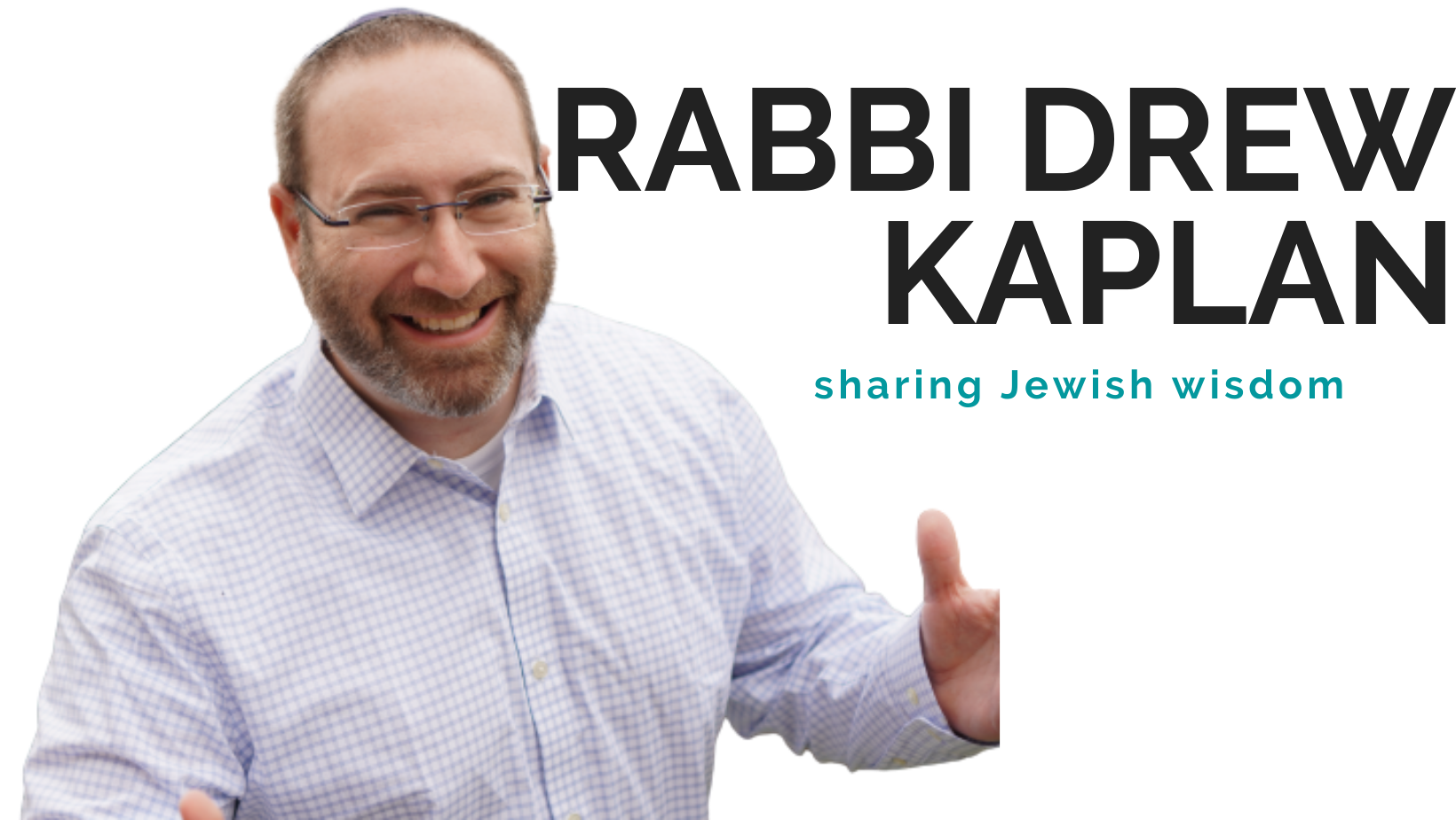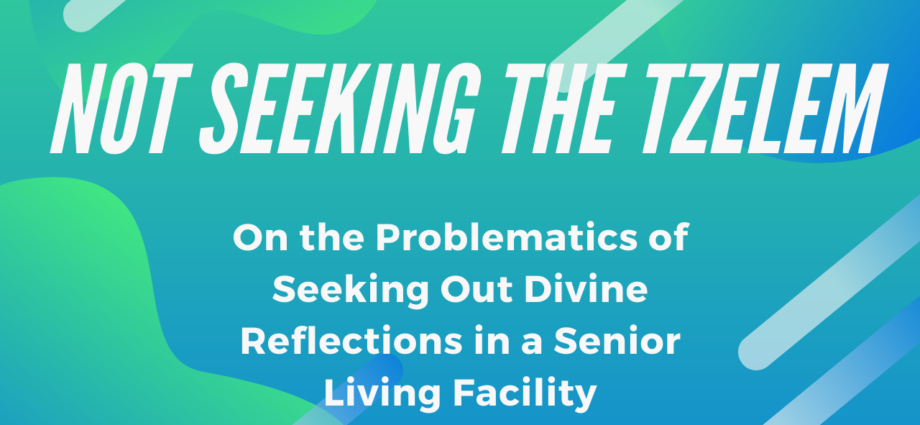 Having served as the director of pastoral care at a senior living facility for over 13 months, I am seeking ways for professional development in a variety of ways, including better understanding this type of role. As such, I recently acquired Jewish Pastoral Care: A Practical Handbook from Traditional and Contemporary Sources for better deepening my understanding and practice of this work, and have begun reading various essays within this volume.
Having served as the director of pastoral care at a senior living facility for over 13 months, I am seeking ways for professional development in a variety of ways, including better understanding this type of role. As such, I recently acquired Jewish Pastoral Care: A Practical Handbook from Traditional and Contemporary Sources for better deepening my understanding and practice of this work, and have begun reading various essays within this volume.
In Appreciation of the Wilderness Model
The other day, I read Rabbi Dayle A. Friedman’s “Seeking the Tzelem: Making Sense of Dementia”,[1] as I work with people with dementia, and seeking to gain a deeper and better understanding of working with people with dementia.
I must say that I found her description of those with dementia undergoing a sort of journey in the wilderness to be quite fascinating (77-80). I greatly appreciated this description of hers that one way to conceive of dementia is as a מדבר (midbar, wilderness):
One way to conceive of dementia is as a midbar, a wilderness. For the Israelites, the forty years of sojourning in the midbar after their liberation from slavery were mysterious and difficult: They wandered with few markers toward an unknown destination; they could not sustain themselves without divine help; they were vulnerable to unsympathetic people they met along the way and to the harsh realities of nature; they could not return to the place of their memories, Egypt; and they could not truly imagine what lay ahead.
Perhaps people with dementia experience their lives as a kind of midbar. The loss of memory is the hallmark of their condition. This memory loss is distinct from the ever-duller recall with which those of us in midlife or beyond contend. …
The person with dementia experiences progressive loss of memory, at first short-term and, eventually, nearly all memory becomes in accessible. The awareness of this loss is most acute in the early phase. of dementia. The sense that one is losing one’s memory is terrifying. Depression and agitation are often concomitants of early-stage dementia. Losing our memory means losing our connection to pieces of ourselves, and, eventually, connection to significant pieces of those who have shared our lives.
When you cannot remember the past, and cannot conceive of the future, what you are left with is the present moment. Being present in and aware of the moment at hand can bring joy if the moment is positive, and despair if it is not, for, in that moment of midbar, nothing else is imaginable. It can be a sweet and tender privilege simply to sit with a person with dementia, just holding hands, just being there, without distraction or agenda.
The midbar in which the Israelites wandered held places of beauty and moments of amazing power. This is also true for the midbar of dementia. While memory and other faculties may fade, many people experience an unabated capacity for joy and love, at least until the final stages of the disease. (78)
I found this connection that she wrote about considering connecting dementia and a sort of wandering to knowledge of one’s whereabouts and having no sense of it to be really fascinating and a really insightful connection.
The Problematics of Seeking Out Divine Reflections
One aspect that I find to be potentially problematic is her section on “Seeing the Tzelem: How Does Dementia Look to God?” (84-85). There are many challenging aspects in this section.
She begins this section with “The biblical creation narrative tells us that God created humanity b’tzelem Elohim, in God’s own image (Genesis 1:26). Stephen Sapp suggests that the task in approaching a person with dementia is ‘to see as God sees’” (84).[2] Rabbi Friedman mentions this task, but not what is advantageous about such a perspective; I am left wondering why we should approach people with dementia as God sees. What is wrong with approaching them as people see? Moreover, why does Rabbi Friedman advocate that we should be thinking about people being made in God’s reflection, especially in this state?
After God says “נַֽעֲשֶׂ֥ה אָדָ֛ם בְּצַלְמֵ֖נוּ כִּדְמוּתֵ֑נוּ וְיִרְדּוּ֩ בִדְגַ֨ת הַיָּ֜ם וּבְע֣וֹף הַשָּׁמַ֗יִם וּבַבְּהֵמָה֙ וּבְכׇל־הָאָ֔רֶץ וּבְכׇל־הָרֶ֖מֶשׂ הָֽרֹמֵ֥שׂ עַל־הָאָֽרֶץ Let us make man in our image, after our likeness. They shall rule the fish of the sea, the birds of the sky, the cattle, the whole earth, and all the creeping things that creep on earth” (Gen. 1:26), we read that God then “וַיִּבְרָ֨א אֱלֹהִ֤ים ׀ אֶת־הָֽאָדָם֙ בְּצַלְמ֔וֹ בְּצֶ֥לֶם אֱלֹהִ֖ים בָּרָ֣א אֹת֑וֹ זָכָ֥ר וּנְקֵבָ֖ה בָּרָ֥א אֹתָֽם created man in His image, in the image of God He created him; male and female He created them” (Gen. 1:27).
In this section at the beginning of humanity, the physical image of God is seemingly replicated. In fact, the rabbis sought to figure out various configurations of this combined creation of male and female created as one (Bereshit Rabbah 8:1):
רַבִּי יִרְמְיָה בֶּן אֶלְעָזָר בְּשָׁעָה שֶׁבָּרָא הַקָּדוֹשׁ בָּרוּךְ הוּא אֶת אָדָם הָרִאשׁוֹן, אַנְדְּרוֹגִינוֹס בְּרָאוֹ, הֲדָא הוּא דִכְתִיב: זָכָר וּנְקֵבָה בְּרָאָם.
אָמַר רַבִּי שְׁמוּאֵל בַּר נַחְמָן, בְּשָׁעָה שֶׁבָּרָא הַקָּדוֹשׁ בָּרוּךְ הוּא אֶת אָדָם הָרִאשׁוֹן, דְּיוּ פַּרְצוּפִים בְּרָאוֹ, וְנִסְּרוֹ וַעֲשָׂאוֹ גַּבִּים, גַּב לְכָאן וְגַב לְכָאןRabbi Jeremiah, son of Elazar, said: “At the time that the Holy One created the first human, He created him as a hermaphrodite, as it is said, ‘male and female He created them’ (Gen. 1:27).”
Rabbi Samuel, son of Nahmani, said: “At the time the Holy One created the first human, He created him as a dual-sided creature, and sawed him and made him backs, a back here and a back there, as it is said, ‘Back and before You formed me’ (Ps. 139:5).”[3]
Rabbi Friedman then argues that she suggests that “God sees the tzelem in the person with dementia, the divine spark within” (84). This is an interesting move beyond what we may call “The Physical Model” of humans being created within the Divine Reflection, and on to what one might call “The Spark Model”. It seems that she has now moved on to considering humans to contain a divine spark within themselves. She then quickly moves on to an intriguing suggestion that “The late Hershel Matt reflected on his experience in providing pastoral care for people with dementia, and wondered where that tzelem could be in those diminished by confusion and incapacity. He suggested that what he was witnessing was ‘the fading image of God’” (84).[4]
In considering what one might call “The Mental Model”, this is an intriguing approach to this work. It certainly holds an appeal, as it would seem that one experiences such a person as diminished in their own personhood, thus, a faded image of God, as Rabbi Matt would have framed it. Although it is unclear why one would need to even bring God into the picture of considering such a person, nevertheless, it is a fascinating framing of such encounters.
She then mentions an entirely different model, that “according to the Maggid of Mezeritch, God had an image of humanity in mind before we were even created, and this image is unchanging in past, present, and future. In other words, we always look the same to God” (84).[5] Perhaps, this may be labeled “The Unchanging Model”, where[, despite our images looking differently to other people,] we are perceived by God to be the same. She then continues, based “on this teaching and my own encounters with people with dementia, I would suggest that the tzelem is not dependent on cognition or capacity. Amid all the changes of dementia, the tzelem remains, for it is our very humanity” (84).
Rabbi Friedman continues and mentions even another model, that “God sees the neshamah, the soul. We are taught that the soul within us is pure, and remains within us until we die” (84).[6] Perhaps this model might be called “The Pure Soul Model”, which is, just like the Unchanging Model, is viewing such people from God’s perspective.
Yet, I struggle to understand why we need to view the world as if we are God. What purpose does considering people from God’s perspective achieve? Ultimately, we are still people and that is our embodied context. We are merely people, which is why neither the Unchanging Model nor the Pure Soul Model seem relevant for us. This leaves us with the Physical Model and the Mental Model. But are these even helpful to those of us in this line of work?
When we think about these approaches to considering people who are under our care in pastoral situations, especially in the professional context in which I find myself at a senior living facility where many people may not be as physically capable as they once were, using the framework of the Divine Reflection would inherently reflect a necessarily diminished Divine Reflection. Utilizing the framework of צלם אלהים (tzelem Elohim, Divine Reflection) seems to be a problematic view, certainly for what one might call the Physical Model, as it indicates that these such people are lesser images of God. I am not comfortable with bringing the concept of tzelem Elohim into the picture due to this problematic.
But what about the other models – the Spark Model and the Mental Model? How useful are these models for this concept?
I find Rabbi Matt’s Mental Model to be intriguingly useful in a practical sense in approaching those with dementia, although how helpful is it to consider them as possessing less Godliness within them? To be honest, I do not find the Mental Model resonating with me from a textual perspective vis-à-vis the Genesis story. Moreover, while the Spark Model is cute, I also do not find it to resonate with me textually, and it seems to not even mirror anything in the Biblical story.
In the subsequent section, “Seeking the Tzelem: The Challenge for the Spiritual Caregiver” (85ff), Rabbi Friedman writes “The role of spiritual caregivers for people with dementia is to emulate God in seeking the tzelem. We need to remind ourselves that even when the tzelem is not apparent, it is there. In the person who is disoriented, regressed or even unresponsive, somehow the image of God resides” (85).
I am struck by her assertion that God seeks the Divine Reflection in people. Where is that we God seeks the tzelem? She creates this notion out of thin air and does not provide any support for this assertion. Maybe God never seeks out people’s Divine Image, no matter the model to which one subscribes. She then asserts that the Divine Reflection is still in someone even when it is not apparent; this is interesting, as this seems to be more model-dependent. For those of us who subscribe to the Physical Model, this is obvious that the Divine Reflection will always be there; for those of us who subscribe to other models, however, it may be less so.
All of this is operating under the expectation to leverage this Biblical concept in conceptualizing or even relating to those who are under our care in such facilities. Having pointed out the potential problematics in and utilizing this biblical phrase in such a context, perhaps we might also consider not using it whatsoever. Inasmuch as we can and should emulate God, that that need not necessitate that we seek out any Divine Reflections in people. As I pointed out previously, trying to investigate and inquire as to what this image of God might be in people, especially with diminished capacity – whether physically, mentally, or otherwise – may not yield the results for which any of us are seeking.
I have found that it is best to dispense with this all together and encounter people as people without trying to bring God into it.
Remembering For Them
One final note: I will say that I did appreciate the section “Remember for Them” (85-86), in which Rabbi Friedman writes that “spiritual caregivers can…connect them to memory” (85), and then referencing Rav Joseph in the Talmud, who had an incredible memory, lost it, and then regained it (I have wanted to do a separate treatment regarding him for a while now, so stay tuned for that…).
Conclusion
This article was an interesting set of ideas and arguments concerning those of us in this line of work and I appreciated her attempts at connecting these approaches with regards especially to those people with dementia. While I appreciated her connections with regard to sympathizing with those in dementia, as well as helping people remember things, I did not find her section on humans as Divine Reflections to be helpful (and, in fact, found it to be somewhat problematic, as it can diminish how we view people). Overall, though, it was helpful in conceptualizing this work within a Jewish framework.
Notes
[1] Rabbi Dayle A. Friedman, “Seeking the Tzelem: Making Sense of Dementia”, in Jewish Pastoral Care: A Practical Handbook from Traditional & Contemporary Sources, ed. Rabbi Dayle A. Friedman, 2nd edition (Woodstock, VT: Jewish Lights Publishing, 2010), 75-92. All pagination references will be to this edition. This essay originally appeared in print in the first hardback edition (2001) and second hardback edition (2005), followed by appearing in the Spring 2006 volume of The Reconstructionist, and, subsequently, in the volume that I am referencing.
[2] Rabbi Friedman cites Stephen Sapp, “To See Things as God Sees Them: Theological Reflections on Pastoral Care to Persons with Dementia,” in Spiritual Care for Persons with Dementia: Fundamentals for Pastoral Practice, Larry VandeCreek, ed. (Binghamton, N.Y., Haworth Press, 1999), 37 (Friedman, 90, n. 20).
[3] N.B. Rabbi Jeremiah, son of Elazar is quoted in the Babylonian Talmud as articulating the opinion attributed to Rabbi Samuel, son of Nahmani in Bereshit Rabbah (Eruvin 18a and Berakhot 61a).
[4] She references Hershel Matt, “Fading Image of God? Theological Reflections of a Nursing Home Chaplain,” Judaism, Vol. 36, No. 1, (Winter, 1987): 75-83 (Friedman, 90, n. 21). I am quite curious to read this article, despite it having been published more than three decades ago, it may still retain further nuggets of wisdom for my present professional position.
[5] Rabbi Friedman references that this was cited in Itturei Torah, Aaron Jacob Greenberg, ed. (Tel Aviv: Yavneh, 1985) on Parashat Bereshit (Friedman, 90, n. 22).
[6] Here, Rabbi Friedman references the language used in the blessing of אלהי נשמה (Friedman, 90, n. 23).

